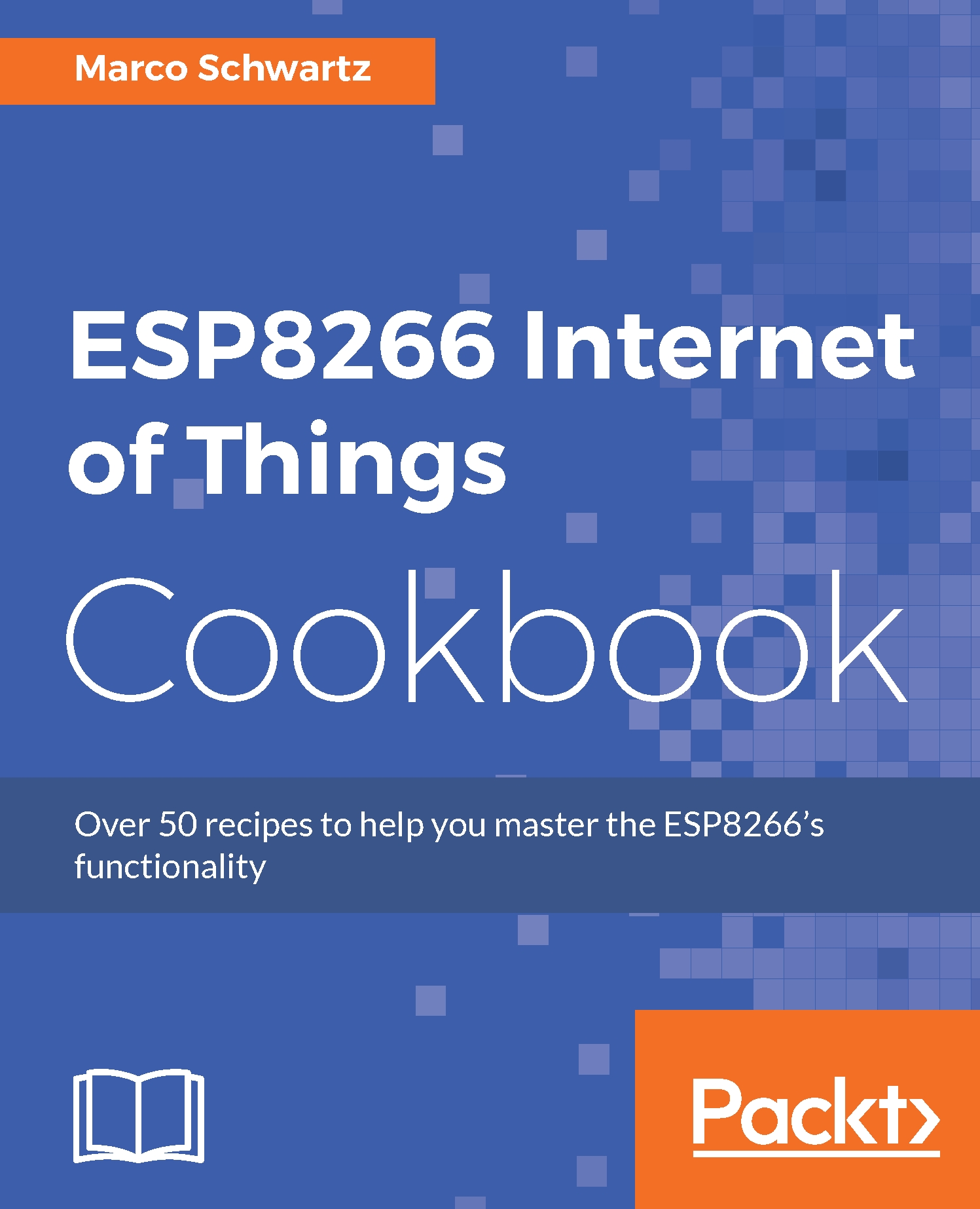Monitoring several ESP8266 modules at once
In advanced and more complex monitoring solutions, you will have to use several ESP8266 modules. This may be due to the distance between the areas where parameters are being monitored, or when the sensors being read are more than the number of GPIO pins available on an ESP8266 module. In such cases, you will have to monitor data from more than one ESP8266 module on the same dashboard. To demonstrate how to do that, we will use one ESP8266 board to monitor temperature and humidity with the DHT11 sensor, and another ESP8266 board to monitor soil moisture. Data from both ESP8266 boards will be monitored using one dashboard.
Getting ready
You will need these hardware components:
Two ESP8266 boards
Two USB cables
Soil moisture sensor (https://www.sparkfun.com/products/13322)
220 Ω resistor
100 Ω resistor
10 kΩ resistor
Breadboard
Jumper wires
Start by mounting the ESP8266 board and the DHT11 sensor onto the breadboard...




































































